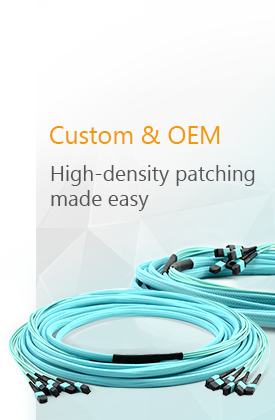In passive optical network (PON), fiber optic splitter is used as a key component to divide the power of the light over multiple fibers which allows a single PON interface to be shared among many subscribers. When choosing a splitter, we often feel puzzled about some similar concepts. Today, we are going to unravel the mystery of fiber optic splitter through three groups of concept comparisons.
FBT vs PLCThere are two most commonly deployed splitters in the market—FBT (Fused Biconical Taper) splitter and PLC (Planar Lightwave Circuit) splitter. FBT splitter is made out of materials that are easily available, for example steel, fiber, hot dorm and others. All of these materials are low-price, which determines the low cost of the device itself. The technology of the device manufacturing is relatively simple, which has the impact on its price as well. PLC splitter manufacturing technology is more complex. It uses semiconductor technology (lithography, etching, developer technology) production, hence it is more difficult to manufacture. Therefore, the price of the device is higher. Although the cost of PLC splitter is higher than FBT splitter, PLC splitter is more reliable when compared to FBT splitter. Other differences between FBT and PLC splitters are shown as following:
FBTPLCOperating Wavelength1310 nm, 1550 nm, 850 nmWhole Wavelength (1260-1650 nm)Inputs/OutputsOne or two inputs withan output maximum of 32 fibers.One or two inputs with
an output maximum of 64 fibers.Split RatioCustomisable. Special types such as
1:3, 1:7, 1:11 split ratio are available.Non-customisable. Only standard versions
such as 1:2, 1:4 and 1:8 and so on.SizeIt is much bigger in size and
cannot easily fit in all cabinet.It is much smaller and can easily fit
in a cabinet and save much spaceAssymetric of Attenuation per BranchesCustomized attenuation split possible.Attenuation split evenly
1xN vs 2xN
A uniform power splitter with a 1xN or 2xN splitting ratio configuration is most commonly deployed in a PON system so that the optical input power is distributed uniformly across all output ports. Of course, splitters with non-uniform power distribution is also available but such splitters are usually custom made and command a premium. Thus, they are not commonly used. Here, the letter “N” refers to the number of output ports. It is because of this 1xN or 2xN configuration, the splitter enables to deploy a Point to Multi Point (P2MP) physical fiber network with a single OLT port serving multiple ONTs.

2xN splitter is one more output than 1xN splitter. So, when to use it? Some operators prefer to include a certain level of redundancy in their network to ensure service even when a fiber is accidentally cut. Because the metro network is often constructed in a ring configuration, it makes sense to connect both ends of the fiber to the input of the splitter. In that case, the second splitter input leg will still be accessible from the other side if the connection to the first input leg fails. Thus, in general, the 1:N splitters are usually deployed in networks with a star configuration while 2:N splitters are usually deployed in networks with a ring configuration to provide physical network redundancy.

Splitters can be deployed in a centralized splitting or a cascaded splitting (also called distributed splitting) configuration depending on the desired network topology. Centralized split typically entails 1×16 and 1×32 split ratio counts. It provides the best optical budget in a single access point. The more centralized, the higher the port aggregation it is which makes network testing, troubleshooting and maintenance more easy and efficient in one location. In addition, it can also improve the utilization of splitter output ports. Cascaded split is possible in 1:4 and 1:8 or 1:2 and 1:16 split combinations. A cascaded split gives the advantage of a lower fiber count in smaller access points which enables PON port economization for sparser zones. Additionally, it can reduce cost in terms of horizontal optical fiber and optical fiber enclosures are much smaller due to lower port count. Thus, this arrangement is not only optimal in rural areas due to the low fiber count but also be the preferred solution in cities due to the smaller size of the network elements. In fact, it is not absolute. The optimal solution will differ also depending on the expected take rate: centralized splitters have a more efficient use of the splitter ports when the take rate is low.




